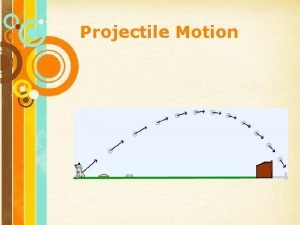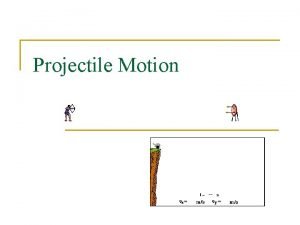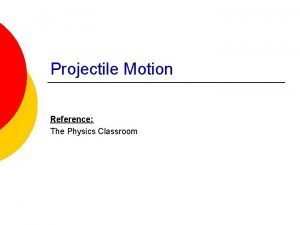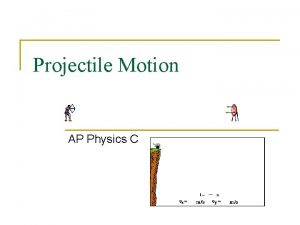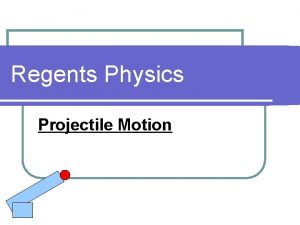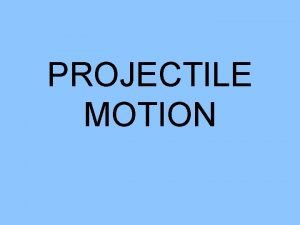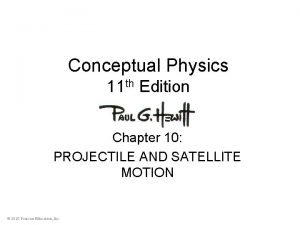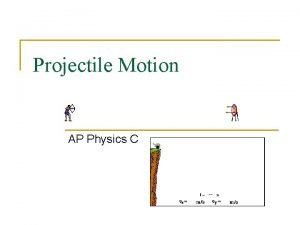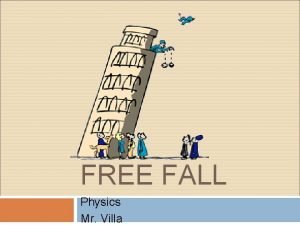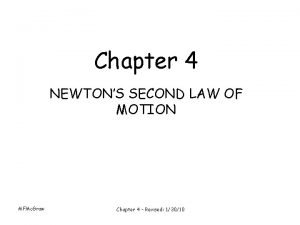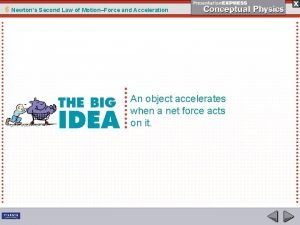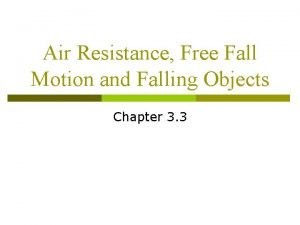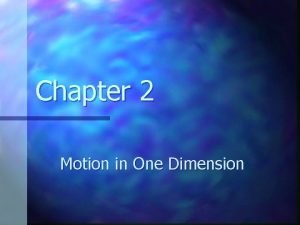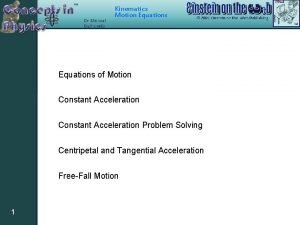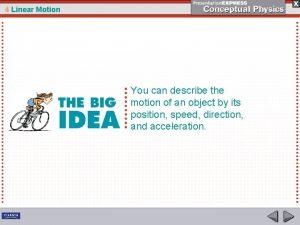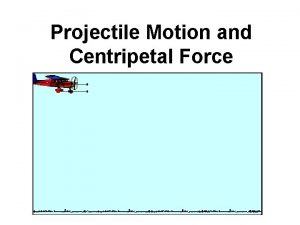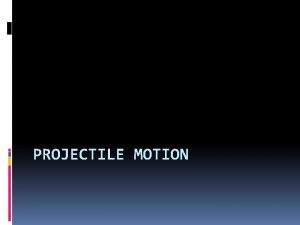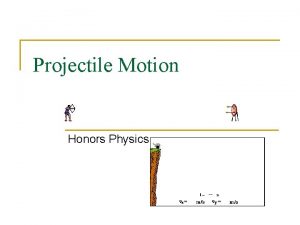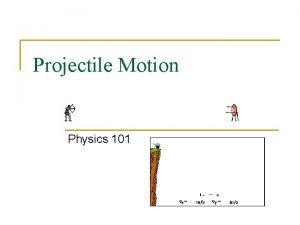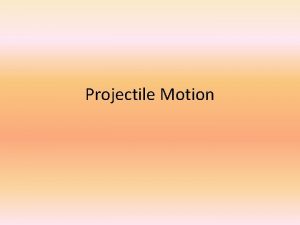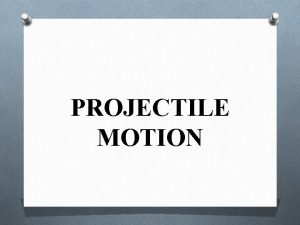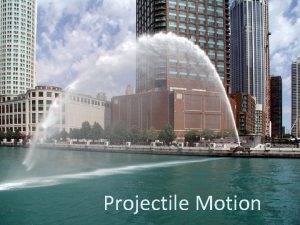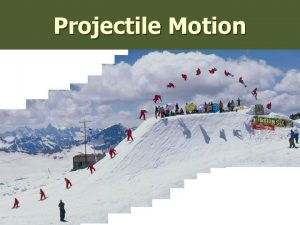Free Fall Motion Introduction to Projectile Motion Physics




















- Slides: 20

Free Fall Motion Introduction to Projectile Motion Physics

Assumptions • The upward direction is taken as the positive direction. If the origin is taken at ground level, then: – – yi : is the initial height of the object at time zero. vi : is the initial velocity of the object in the ydirection.

Free Fall • When an object is propelled into the air, it is assumed that all other forces acting on the object except gravity are negligible. This means that: – We neglect any effects due to air resistance on the object. – We neglect any effects due to the Earth's rotation. – We assume that the object does not rise high enough for the acceleration of gravity to change. • With these assumptions the body's acceleration is both constant and downward regardless of its direction of motion or its height above the ground. This means that object's acceleration is downwards regardless of weather the object is moving upwards or downwards. • a = -g = -9. 80 m/s 2.

Frame of Reference – Downward Negative • The freefall equations were derived by assuming the upward y-direction is the positive direction and the clock starts at time t = 0. The sign of the acceleration is negative and it equal to a = -g. (When an object is moving downwards, its velocity will be a negative number using this frame of reference. )

Frame of Reference – Downward Positive • It is possible and sometimes useful to take the downward direction as positive. In this case the equations of motion will not be identical to those above. Typically one would use this frame if the object's motion was all downwards like a ball thrown downwards from the top of a building. The main difference between these two frames is the sign of the velocity and acceleration.

Galileo Galilei and The Law of Falling Bodies: • In the absence of air resistance, any two bodies that are dropped from rest at the same moment will reach the ground at the same time regardless of their mass. • A stronger statement is: The acceleration of all objects is the same in the absence of air resistance. As long as an object is in freefall regardless if it is going up, down or sideways - its acceleration is equal to 9. 80 m/s 2 downwards.

The Law of Falling Bodies: • Two identical objects are dropped from the same height at the same time. With air resistance set to zero, both balls strike the ground at the same time. As the air resistance is increased, the more massive object will strike the ground first. With enough air resistance the lighter ball reaches terminal velocity.

Graphing Free Fall Motion. distance vs. time, velocity vs. time, and the acceleration vs. time diagrams. g = - 9. 8 m/s 2

Graph Explanation

Derivation of the Free-Fall Equations: Since we usually associate the vertical direction with the yaxis, we will transform the generic equations for constant acceleration by first replacing " x " with " y ", " a " with "-g ", and " v " with " vy ". Then,

Free fall equations-Simplified • We use kinematics equations because as Galileo described free-fall motion is a constant acceleration. • Although all equations are used the most prevalent equation is #1 and #3 or #5(depending on your direction) where a=-g. • The following are rearrangements of #1 and #3 or #5 to find distance traveled, time and velocity at a given point of fall. • Initial velocity is usually made to be zero.

Up or Down '…an object is dropped' Vi = 0 a = g = +9. 8 m/s 2 (make down +) … an object is ascending: a = g = -9. 8 m/s 2 (make down -) Ex) Object thrown up Vi = 110 m/s, sketch a V vs t plot of the object from the throw to the peak (use a = -10 m/s 2)

Example Problem

Example Problem 2

Example Problem 3

Example Problem 4

Example Problem 5



 Free fall and projectile motion ppt
Free fall and projectile motion ppt Projectile motion diagram
Projectile motion diagram Physics classroom
Physics classroom Vertical velocity formula
Vertical velocity formula Projectile motion ap physics
Projectile motion ap physics Physics
Physics Regents physics projectile motion questions
Regents physics projectile motion questions A projectile has a single force that acts upon it
A projectile has a single force that acts upon it Ap physics projectile motion
Ap physics projectile motion Projectile motion in softball
Projectile motion in softball Honors physics projectile motion test
Honors physics projectile motion test Chapter 10 projectile and satellite motion
Chapter 10 projectile and satellite motion Physics javelin projectile motion
Physics javelin projectile motion Do heavier objects fall faster
Do heavier objects fall faster Newton's second law
Newton's second law Newton's second law of motion free fall
Newton's second law of motion free fall Free fall upward motion
Free fall upward motion Air resistance on earth
Air resistance on earth Free fall motion in one dimension
Free fall motion in one dimension Free fall motion
Free fall motion 4 linear motion equations
4 linear motion equations
